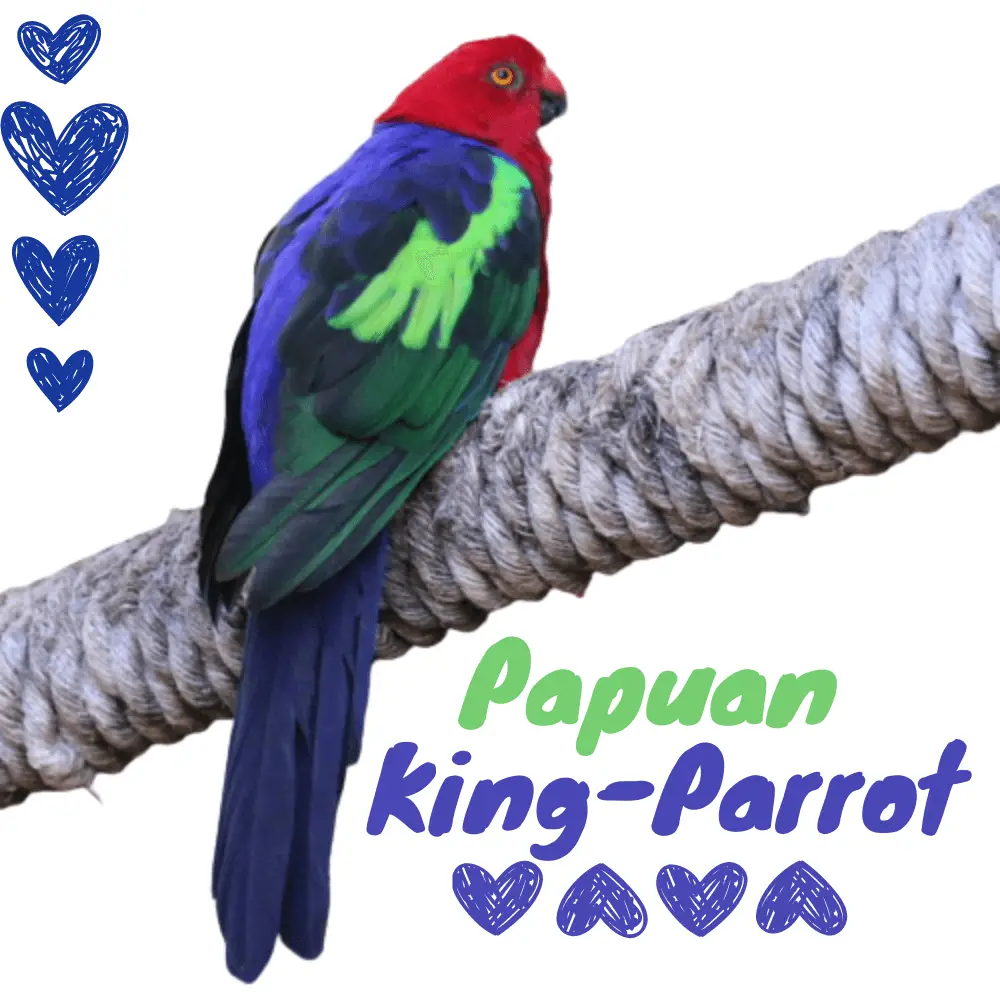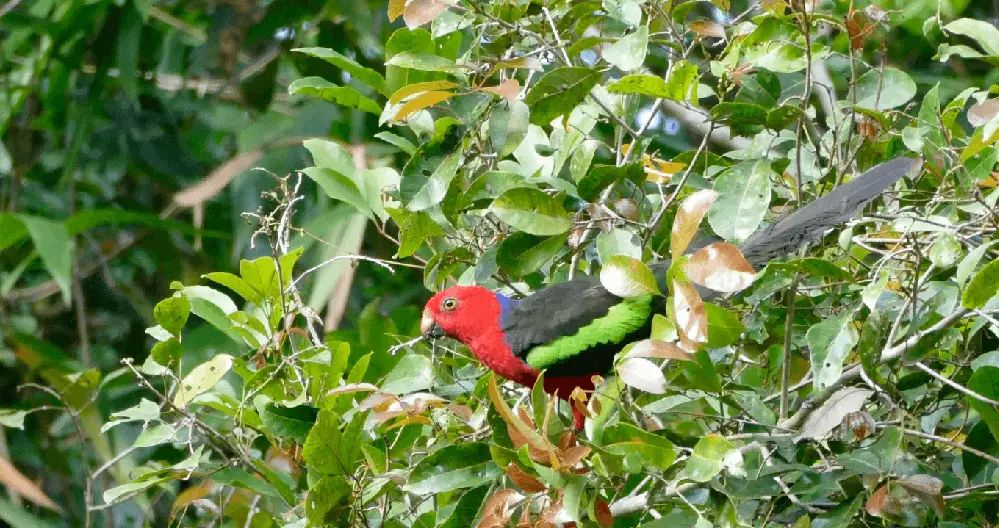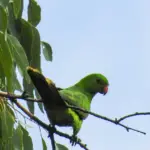
Papuan King-Parrot 36 cm; 138–190 g. Similar to A. amboinensis but the hind crown and nape deep blue, mantle and scapulars black, lesser and median wing-coverts greenish yellow forming large wing patch.
Female has head, back, wings and underwing-coverts oil green, breast the same with reddish edges; tail green above, blackish distally.
Immature like female but without reddish edges on breast, bill brownish. Race callopterus restricts blue above the mantle to narrow nuchal band; Papuan King-Parrot (Mosakowskii) male and female like male callopterus, female with mantle and back oil green.
Systematics History
Editor’s Note: This article requires further editing work to merge existing content into the appropriate Subspecies sections. Please bear with us while this update takes place.
Forms a species-pair with A. amboinensis. Females of Papuan King-Parrot have male-type plumage (at least 3), but the subspecies are not otherwise known to differ from the others; study needed. Form wilhelminae (from Kaparé R, in W New Guinea) is included within callopterus. Three subspecies were recognized.
Subspecies
SUBSPECIES
Alisterus chloropterus moszkowskii Scientific name definitions
Distribution
N New Guinea from E Geelvink Bay to C North Coastal Ranges.
SUBSPECIES
Alisterus chloropterus callopterus Scientific name definitions
Distribution
WC New Guinea from Weyland Mts to W Central Highlands.
SUBSPECIES
Alisterus chloropterus chloropterus Scientific name definitions
Distribution
E New Guinea E from E Central Highlands.
Distribution
Editor’s Note: Additional distribution information for this taxon can be found in the ‘Subspecies’ article above. In the future we will develop a range-wide distribution article.
Habitat
Shaded interior of the hill rain forest, a middle story to lower canopy; less commonly in monsoon forest and second growth up to c. 2300 m, and occasionally higher or down at sea-level.
Movement
Apparently sedentary.
Diet and Foraging
Berries, small seeds of composites, Casuarina fruit.
Sounds and Vocal Behavior
The commonest vocalization of Papuan King-Parrot is a repeated clear metallic whistle, e.g. “kwee…kwee…kwee”, either down slurred or slurred. Also a piercing “keee!” and a scolding “shek…shek..” in flight.
Breeding
No clear information from Papuan King-Parrot breeding; gonadal development in Jun and Jul, and a juvenile taken in Sept.
SOURCE: Jan Dolphijn
Conservation Status

Conservation status on BirdlifeLC Least Concern
Not globally threatened. CITES II. Generally scarce and in low numbers, though locally common and probably underrecorded owing to highly unobtrusive behavior; thus in one intensively studied lower-lying area density was estimated at 30 birds/km².
A total of 3382 Parrots were reported in international trade in period 1987–1992, virtually all originating in Indonesia where no population data exist; however, quotas were greatly reduced in the mid-1990s.




















